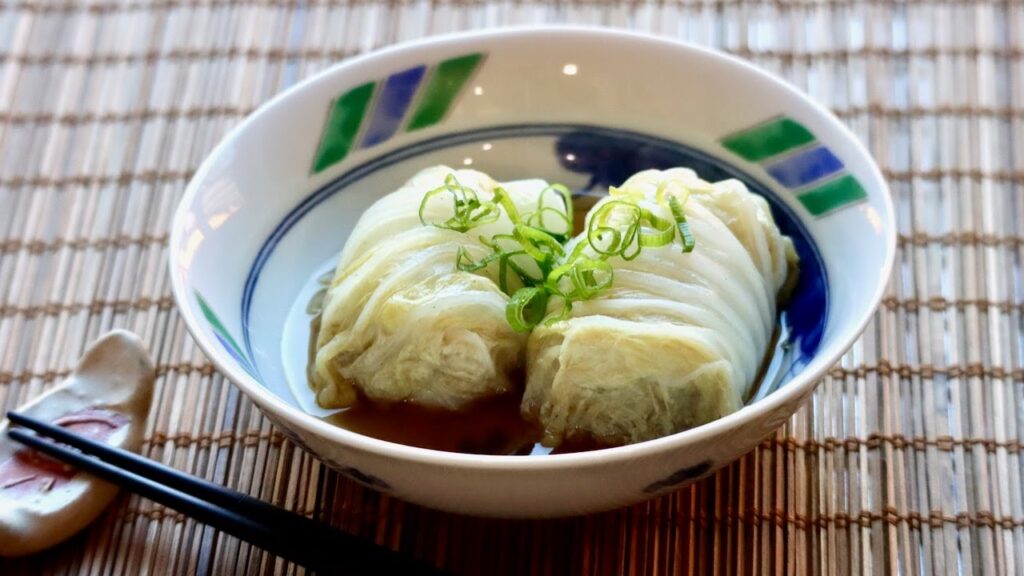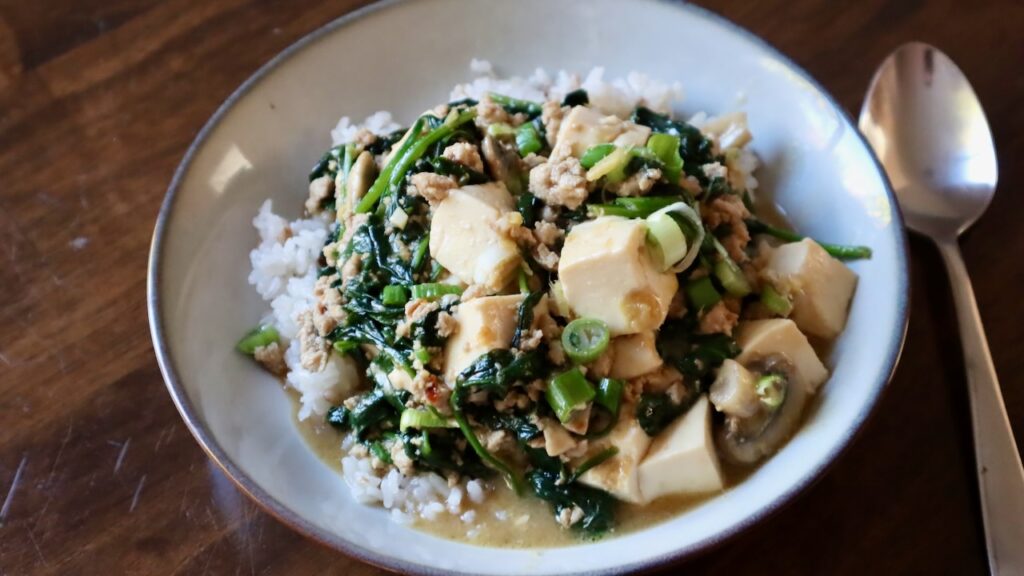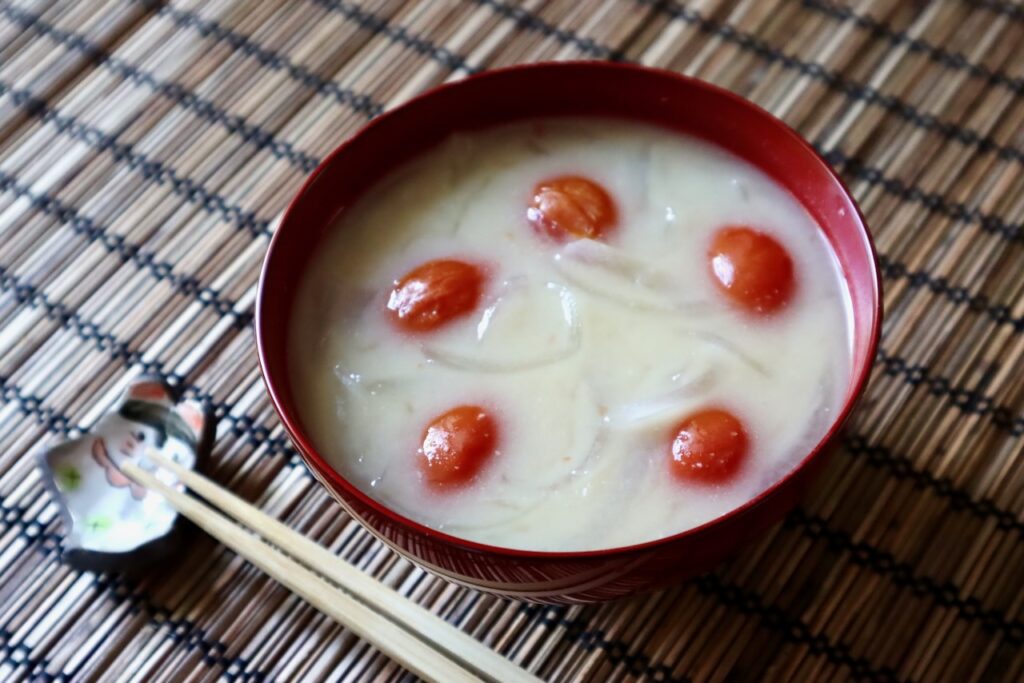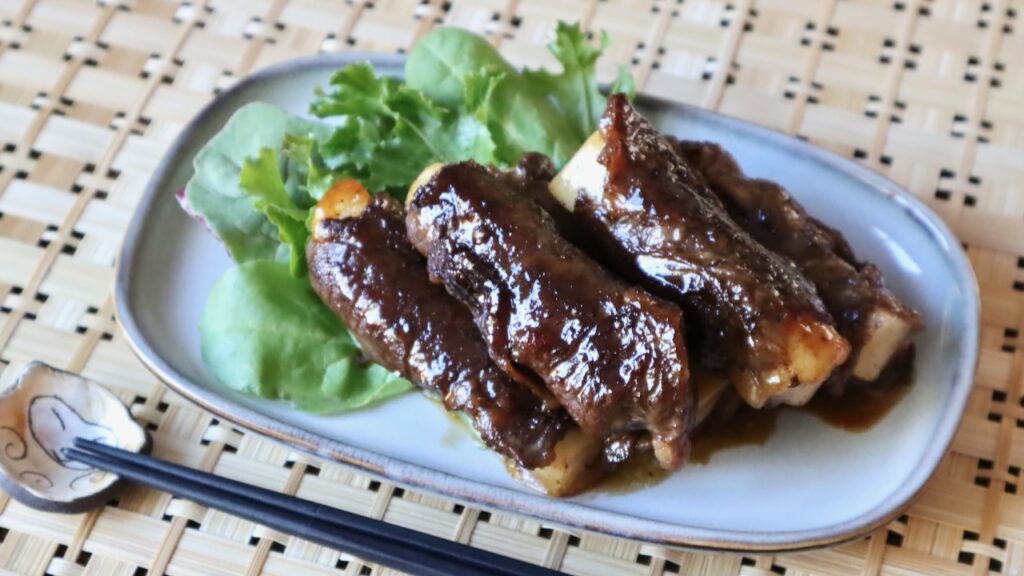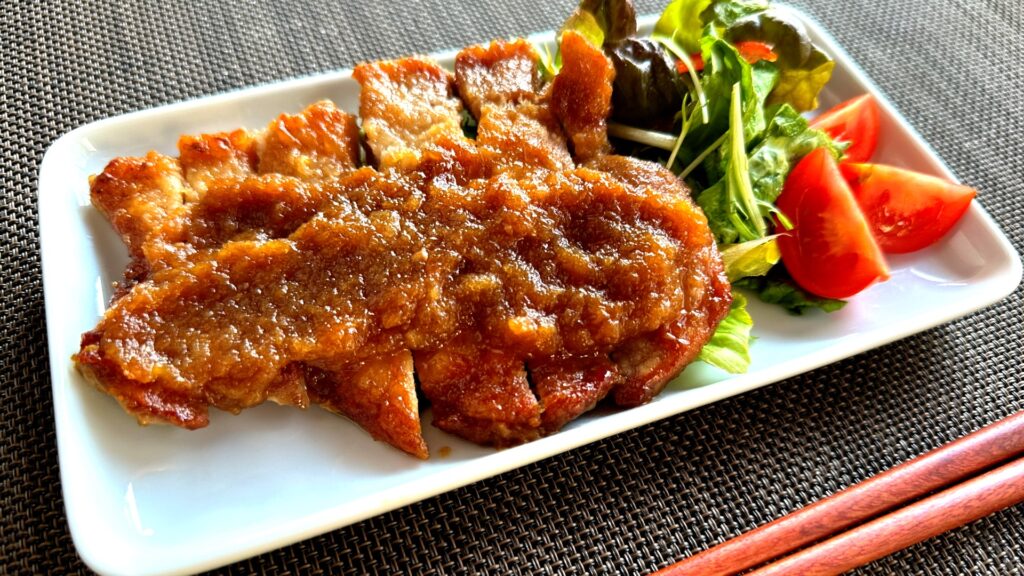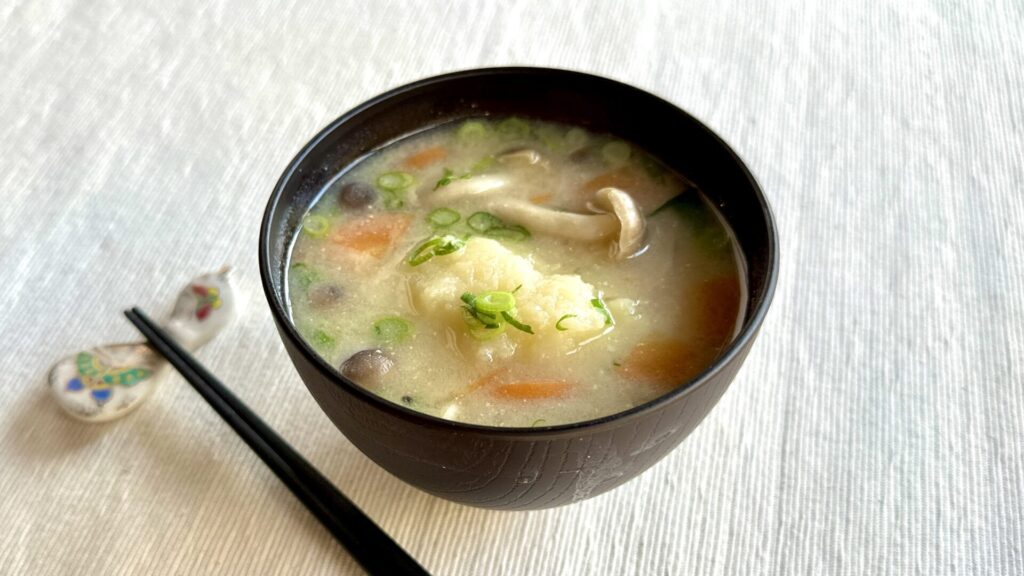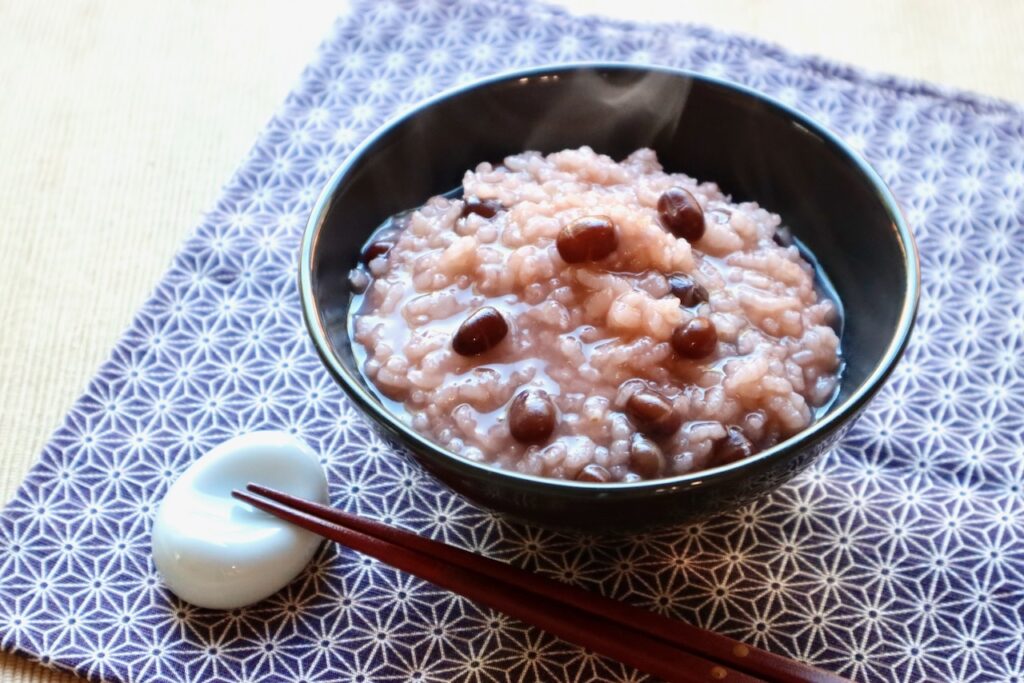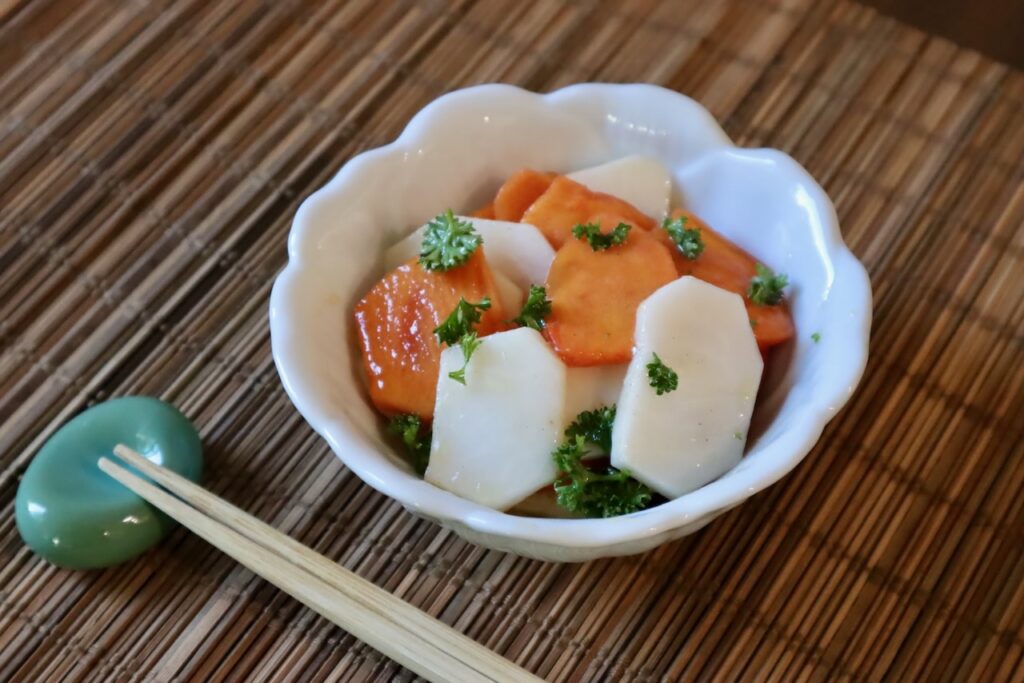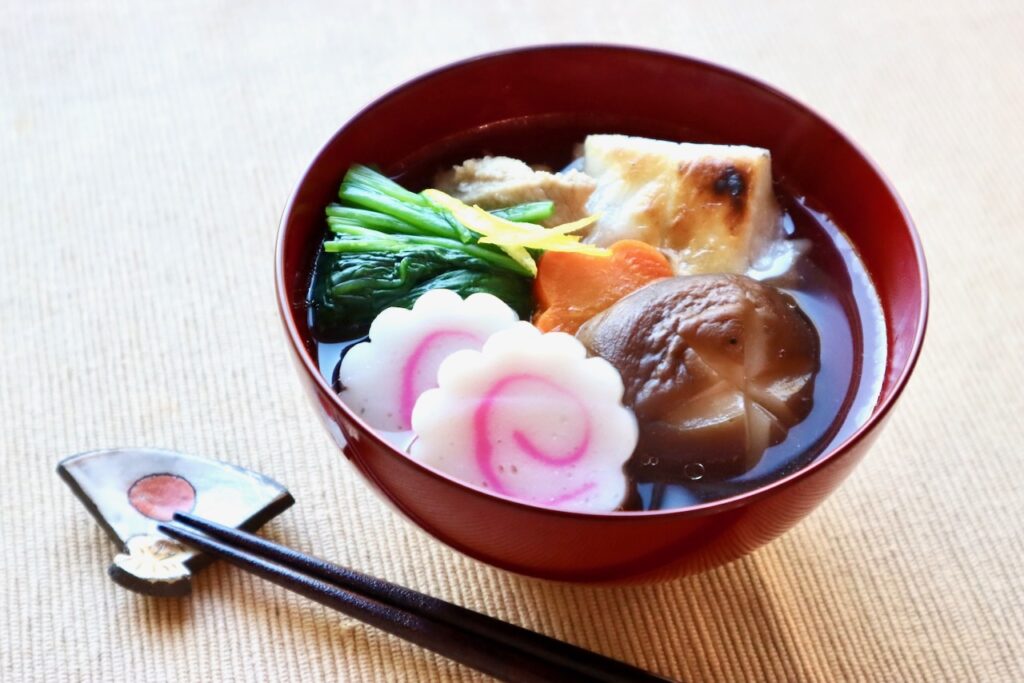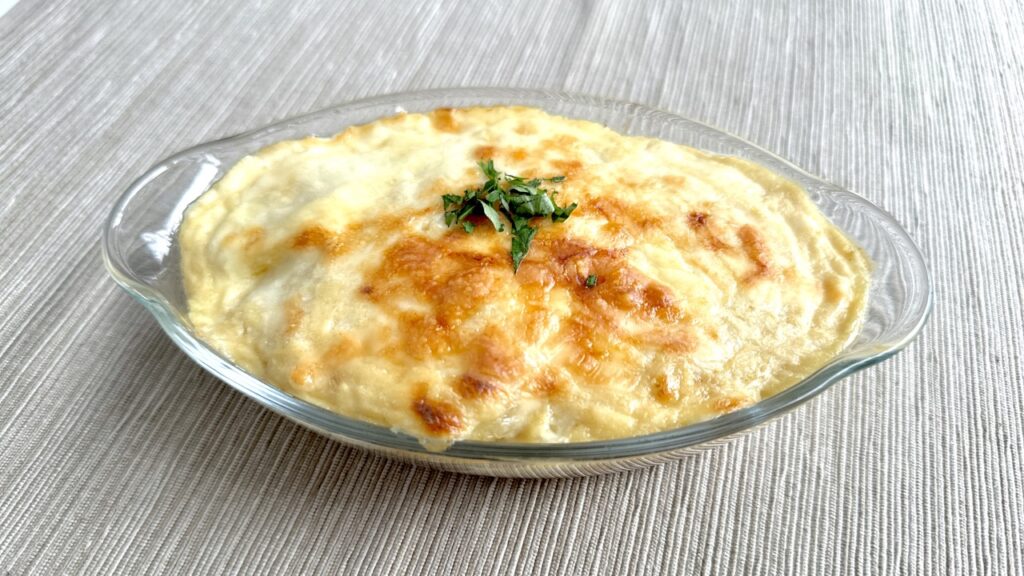Cabbage Roll, also known as stuffed cabbage, is a popular western-style Japanese dish that involves stuffing ground meat into cabbage leaves and cooking them in tomato or consommé soup. It has become a favorite home-cooked entree for everyday dinners in Japan. While Cabbage Roll is a more directly European-inspired dish, Stuffed Nappa Cabbage incorporates more Japanese ingredients and seasonings. This variation is particularly appealing if you enjoy the taste of Dashi soup.
Mapo Tofu with Spinach and Mushroom is a healthy one-dish meal. Mapo Tofu (麻婆豆腐, more commonly known as Mabo Tofu in Japan) is originally from China, but it’s been well adapted in Japan. This is a variation of our home cooked Mabo Tofu with added spinach and mushroom. You can serve it over rice, and it becomes an easy and nutritious meal by itself. This is a perfect dinner to serve on a busy weekday.
Today’s miso soup is made with white miso, sliced onion, and grape tomatoes. White miso is sweeter and milder than regular miso, and it tastes almost creamy. The flavor of the miso balances well with the tartness and umami from tomatoes.
Beef Rolled Mochi is a dish where Mochi rice cake is wrapped and rolled with thinly sliced beef, then cooked in a sweet and salty Sukiyaki-style sauce. This is an excellent way to repurpose extra Mochi left over from the New Year’s feast.
Pork Chop with Onion Soy Sauce is a sautéed pork chop served with a sauce made from grated onion, seasoned with soy sauce and honey. Pork sauté is a dish where pork is cooked using the sauté method—a short-duration and high-heat cooking technique—widely accepted in Japanese cuisine, influenced by Western-inspired dishes. It is commonly found in Western-style restaurants and cafes in Japan, but it’s particularly popular in home cooking due to its simplicity. When flavored in a Japanese style, Pork sauté becomes a wonderful dinner entree for everyday cooking there. As the onion cooks through, the taste becomes sweet and mild. Combined with soy sauce and honey, it creates a delightful sauce for the meat dish. This dish takes little time to prepare but serves as a substantial main course. Hope you give it a try!
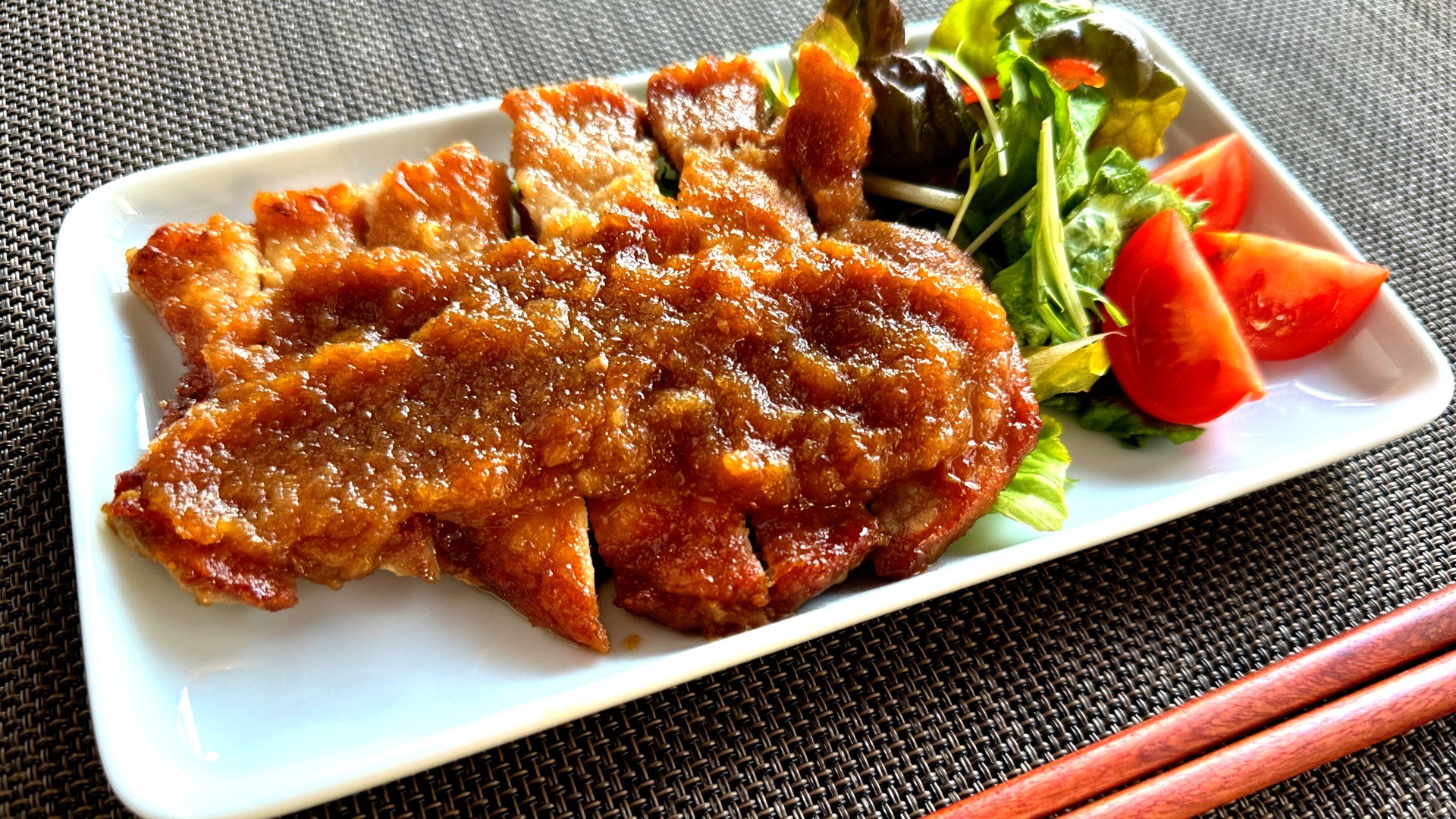
Pork Chop with Onion Soy Sauce
Instructions
- Make onion soy sauce. Grate onion finely. Mix onion, soy sauce, sake, and honey well. Set the mixture aside.
- Make vertical incisions at 1" (2.5 cm) intervals between the lean and fatty parts of the pork chops, creating shallow cuts. Pound the meat a few times with a rolling pin. Season with salt and then lightly coat with flour.
- Heat oil in a frying pan at medium heat. Place the prepared pork and cook for 2-3 minutes. Once browned, turn over, and cook an additional couple of minutes. Remove any excess oil from the pan using a paper towel. Add the onion soy sauce, and cook and stir for another minute.
- Slice into approximately 6 pieces and plate the pork, then spoon the sauce over it. Serve with some vegetables.
Video
Today’s miso soup is made with potato dumplings. Dumpling soups, known as Suiton, are found in many regions in Japan, and the dumplings are usually made from flour and water. Suiton is a simple and hearty dish, loved as comfort food. Here, Suiton dumplings are made with grated raw potatoes. The texture of the dumplings becomes chewy once they are cooked in the soup, and they are delicious. And it’s so easy to make with the ingredients you already have. Add whatever vegetables you have in the fridge; there is no need to shop for this miso soup. It’s warm and filling, making it a perfect dish for cold nights. Hope you try it!
Azuki Gayu (あずき粥), red bean porridge, is a delightful blend of simmered Azuki beans and rice. Unlike ordinary white porridge, it takes on a red hue, and this color has been recognized for its mystical power. It has been used to ward off disasters during house moving or embarking on a journey. Moreover, it holds a special place as a culinary treasure for festive occasions, shrine festivals, and annual events, with a prominent role during Little New Year (January 15th).
This simple salad is made with fuyu persimmon and small radish which are both in season during fall through winter. Known as the national fruit of Japan, persimmons have been loved by the people of Japan for over a thousand years. Persimmons are naturally sweet, and they can be eaten firm or soft after being ripened. For this salad, it’s best to use persimmons that are ripe but still firm.
This potato gratin is made with a delicious creamy Tofu sauce. Typically, gratins feature Béchamel white sauce, but in this recipe, the sauce primarily consists of pureed silken tofu. It offers a healthier alternative with fewer calories while being rich in protein and various nutrients inherent in Tofu. A modest amount of butter and milk, combined with cheese of course, effectively mask the soy flavor of Tofu. Whether scaled up for a crowd in a large baking dish or prepared in a single-serving dish, this versatile dish caters to everyone. Serving it piping hot from the oven is ideal for chilly days. Hope you like it!
